 March 17, 2022 John E. Ross, KD8IDJ, Editor
| ||||||
Hamvention 2022 Announces Award Winners Chairman of the Hamvention Awards Committee Michael Kalter, W8CI, has announced the 2022 Dayton Hamvention® award winners.
Kerry Banke, N6IZW, of La Mesa, California, received the Special Achievement Award. Banke, first licensed in 1961 and now retired, spent most of his career in the research and development of electronics systems as a microwave RF electrical engineer. This included 14 years as a Qualcomm engineer, developing innovative microwave wireless technologies. Banke's electronic interests span dc to light, with particular interest and expertise in microwaves. His ham radio operations have included transmissions on 136 kHz up to laser. Banke's support to human spaceflight amateur radio started in 1994 when he served as a school technical mentor and certified ground station for the Shuttle Amateur Radio Experiment (SAREX) program. When NASA transitioned from SAREX to the International Space Station (ISS), Banke became a member of the Amateur Radio on the International Space Station (ARISS) hardware team. For 7 years, working from his home and electronics lab garage, Banke led the circuit design, breadboarding, flight circuit board layout, assembly, and testing of the ARISS-developed multi-voltage power supply. This compact power supply innovation serves as the backbone of the ARISS next-generation on-orbit radio system. Banke's contributions to the recently launched ARISS hardware system has significantly enhanced current ham operations on the ISS. Additionally, they enable future amateur radio expansion and experimentation that will permit new educational and operational capabilities for youth and hams. Annually, hundreds of thousands of ISS ham contacts are made via the voice repeater and APRS digipeater and thousands of youth are inspired and engaged through ARISS ham radio connections with astronauts aboard the ISS.
Adam Farson, VA7OJ/AB4OJ, of West Vancouver, B.C., received the Technical Achievement Award for his dedicated professional work with RF and telecommunications engineering issues and innovation. He has been a ham since he was a teenager. Best known to the amateur radio community for his development of multiple sources of technical support for Icom radios, Farson started an Icom technical support net on 20 meters in the 1980s. He and came to know several senior Icom Japan engineers while living in, and traveling around, Japan while working. With each week's net, Farson helped hams solve challenging technical and logistical issues. Farson has spent 3 decades creating an online resource for HF radios. His website -- a repository for highly technical information on Icom and other HF transceivers and amplifiers -- is now one of the most widely cited internet resources. He independently performs measurements on nearly all new radios, including noise-power ratio, a measure he developed. His work includes producing the only data radio hobbyists have, which clearly delineates how modern software-defined radios (SDRs) perform across the spectrum of band noise levels. Farson has written multiple articles for technical and amateur radio journals. Recently, he penned a multipart series on modern HF solid-state amplifier design principles.
Jim Simpson, KF8J, of Xenia, Ohio, was named the 2022 Amateur of the Year. First licensed as a teen, Simpson built his first tower in 1966. He worked 39 states, including Hawaii, while living at home with his family. His first shack was in the corner of his dad's garage. Simpson built all his equipment from Heathkit. He upgraded to a General-class license in the late 1970s. He built two towers at his current location in Xenia in 1980, a 100-foot guyed tower for HF antennas and a 55-foot, free-standing tower for satellite communications. Simpson operates on 80 through 10 meters, mostly using voice with some digital operations, as well as on 2 meters and 70 centimeters. Simpson attended his first Dayton Hamvention in 1972. He was a member of the Hamvention committee for several years and was the first to use computers for the annual event to streamline recording data. In 1974, a tornado devastated the city of Xenia, Ohio. In 1975, Simpson saw a way to serve the community, and as a young man, he founded The Xenia Weather Radio Network. He remains active in the organization. Simpson was appointed Second Assistant to the Hamvention General Chair in 1983. In 1984 and 1985, he was appointed Assistant General Chair. He was appointed the Hamvention Chairman on the DARA Board for the 1986 and 1987 Hamvention events. Simpson has served on the Hamvention committee continuously since 1973. During that period, he introduced several technical innovations to the event and remains a senior advisor on the committee. Over many years, he mentored many local hams and has been active in many amateur radio projects in and around Xenia.
The Highland Amateur Radio Association (HARA), K8HO, an ARRL Special Service Club located in Hillsboro, Ohio, has been named the 2022 Club of the Year. HARA was established in 1977 and serves a small rural population in Highland County, Ohio. As a result of ongoing licensing classes and mentoring sessions, the club reached an all-time high membership in 2021 with 143 members. Since 2015, membership has grown by 86 percent, and the membership is comprised of hams from 10 surrounding counties in southwest Ohio and two states. The club maintains five repeaters within Highland County, of which two are linked to provide a broader footprint. The club hosts a weekly 2-meter and 10-meter net, with an average attendance of 28. There are bi-monthly programs, as well as a monthly gathering called the "Brunch Bunch." AMSAT Receives a Grant From ARDC AMSAT has received a generous grant from Amateur Radio Digital Communications (ARDC) for the development of a 3U spaceframe with deployable solar panels. This standardized 3U CubeSat spaceframe will serve as the mechanical platform for AMSAT's Greater Orbit, Larger Footprint (GOLF) series of satellites, as well as for a new generation of low-Earth orbit (LEO) FM satellites.
The need for a 3U spaceframe with deployable solar panels goes back to the original design requirements for the GOLF satellites that would return AMSAT to highly elliptical orbits (HEO). The benefit of this program will provide satellites with wider coverage and longer access times to the entire amateur radio satellite community worldwide. -- Thanks to Frank Karnauskas, N1UW, AMSAT VP of Development Friedrichshafen HAM RADIO 2022 Will Welcome Worldwide Visitors With the recent relaxation of COVID-19 regulations, the Deutscher Amateur Radio Club (DARC) and Messe Friedrichshafen, partners of the HAM RADIO 2022 exhibition in Germany, are optimistically looking forward toward holding the 45th HAM RADIO from June 24 - 26 in Friedrichshafen, subject to the final official approval by the local authorities.
One of the largest amateur radio conventions in the world, alongside Dayton Hamvention® in the US and the Japan Amateur Radio League Ham Fair, HAM RADIO attracts exhibitors and visitors from more than 52 countries to Germany. ARRL The National Association for Amateur Radio® will be among the participating International Amateur Radio Union (IARU) member-societies exhibiting at the convention. HAM RADIO organizers say they are "looking forward to seeing you in Friedrichshafen!" RSGB Legacy Committee to Fund 50 MHz Meteor Scatter Beacon The Radio Society of Great Britain (RSGB) has announced that its Legacy Committee has agreed to fund a 50 MHz beacon specifically aimed at studying meteor events above the UK. The RSGB website reports, "Unlike conventional propagation beacons, this will beam vertically up using circular polarization. The 50 MHz band is particularly suitable for observing meteors by radio as they create an ionized trail strongly reflective to radio at that frequency, while they burn up on entry to the Earth's atmosphere. This is a collaborative project between the amateur radio and radio astronomy communities, and will enable a range of radio-based citizen science and STEM projects studying meteors. The beacon is to be located at the Sherwood Observatory of the Mansfield and Sutton Astronomical Society, a central location for UK coverage." -- Thanks to Southgate Amateur Radio News WRTC 2022 Special Event Station Award Begins New Cycle
Special call signs are active during this event. More than 100 Italian radio amateurs will activate special WRTC call signs, one for each Italian call district, concluding on July 10, 2022. A first-time award promoting WRTC 2022 will be available. Look for these call signs to be active during some contests, concluding with the 2022 IARU HF World Championship. Each participant's contact totals and award-hunter scores will be displayed on a real-time leaderboard. Participants can download the award in digital format. -- Thanks to The ARRL Contest Update Nordic HF Conference 2022 to Be Held in Fårö, Sweden The Nordic HF Conference takes place every 3 years, and the next one is planned for August 15 - 17, 2022, reports the Norwegian Radio Relay League (NRRL), Norway's International Amateur Radio Union (IARU) member-society. NRRL says the conference is a meeting place for industry and defense research within HF, as well as for radio amateurs. The conference takes place in a relaxed and informal environment on Fårö, an island north of Gotland on the Swedish east coast. The event will include "many exciting lectures," together with radios and antennas, held outdoors or in an exhibition tent. The Nordic HF Conference website includes useful information about the conference, a link to registration, and a look back at previous conferences. -- Thanks to the NRRL SOTA Activators Complete their Summit Sweep in Wales In May 2021, father-and-son Summits on the Air (SOTA) activators Tom Read, M1EYP, and Jimmy Read, M0HGY, (the SOTA Association Manager), completed activating every SOTA summit in Wales -- or so they thought. Detailed surveying work later that year, however, revealed the existence of a new "Marilyn" summit in Wales -- Rhinog Fach. "Marilyn" is the nickname given to British and Irish hills with a topographical prominence of 150 meters and is also the qualification criteria for a summit to be included in SOTA in the UK. The new entity was designated the SOTA reference GW/NW-078. Simon Melhuish, G4TJC, was the first to operate from this particular Marilyn in October 2021. The Reads set out to activate the summit on December 21, 2021. The walk was a long one and included a steep final ascent, but the pair were able to complete most of the route in the short daylight hours. Jimmy made 12 contacts, all on 2-meter FM, while Tom completed 19, mainly on 20, 30, and 40 meters on CW. Jimmy and Tom Read can once again claim to have activated every SOTA summit in England, Wales, Northern Ireland, Isle of Man, Jersey, and Guernsey. A Contesting Word to the Wise When submitting contest logs, many contest sponsors will provide an email confirmation of your entry. It's always advisable to check your confirmation email or the contest's Logs Received page to ensure that your entry has been submitted and that your entry category, club name, and location are correct. ARRL, CQ, and other contest sponsors allow you to resubmit your log with any corrections before the log submission deadline. The most recent uploaded log will be used for scoring purposes. After the deadline, some contest sponsors will release raw scores that reflect the results before any log checking has been completed. If, after the deadline, you notice an error in your log submission, contact the contest sponsor to correct it before the results are tabulated and made public. -- The ARRL Contest Update
ARRL Podcasts Schedule
The latest episode of the On the Air podcast (Episode 26) features an audio tour of the 10-meter band.
The On the Air and Eclectic Tech podcasts are sponsored by Icom. Both podcasts are available on iTunes (iOS) and Stitcher (Android) as well as on Blubrry -- On the Air | Eclectic Tech.
The K7RA Solar Update
Tad Cook, K7RA, Seattle, reports: We saw plenty of sunspot activity this week, along with numerous solar flares. A confounding indicator was a higher average solar flux but lower average sunspot numbers. We expect to see them track together, but that isn't always the case. Average daily sunspot number went from 87.4 last week to 74.6 in the latest reporting period, March 10-16. Average daily solar flux increased from 115.5 to 119. A new sunspot group appeared on March 12, another on March 13, and two more on March 14. Total sunspot area (in millionths of the solar disc) declined through the week, starting at 1170 on March 10, then 1080, 1040, 940, 670, 490 and 290. So the decline continued even through days that revealed new sunspots. March 13 was the day with the greatest geomagnetic disturbance with middle latitude A index at 30, planetary A index at 40, and Alaska's college A index at 65. The A index is calculated from the K index, updated every 3 hours. In Alaska, the K was zero in the first three readings, at 0000, 0300 and 0600 UTC, then jumped dramatically to 5, 7, 7 and 5 for the rest of the day. K index is logarithmic, and 7 is a very big number, indicating a geomagnetic storm. The solar flux prediction peaks at 125 on April 6-8, but starting today the predicted flux is 108 on March 17-18, then 106, 104, 102, 100 and 98 on March 19-23, 95 on March 24-26, 100 on March 27-28, 110 on March 29-30, 115 on March 31, then 120, 115 and 120 on April 1-3, 115 on April 4-5, 125 on April 6-8, 120 on April 9-11, 115 on April 12-14, 110 on April 15-17, 100 on April 18 and 95 on April 19-22. Predicted planetary A index is 8, 10, 5, 10 and 14 on March 17-21, 5 on March 22-25, 10 and 8 on March 26-27, 5 on March 28-30, then 10, 25, 15 and 8 on March 31 through April 3, 5 on April 4-15, 12 on April 16-17, 8 on April 18, and 5 on April 19-21. The vernal equinox will occur at 1533 UTC on Sunday, March 20, a good sign for HF propagation as we move from winter to spring conditions in the Northern Hemisphere. Sunspot numbers for March 10 - 16 were 90, 81, 93, 64, 82, 71, and 41, with a mean of 74.6. The 10.7-centimeter flux was 127.1, 126.5, 124.7, 122.9, 114.9, 110.4, and 106.6, with a mean of 119. Estimated planetary A indices were 10, 20, 13, 40, 14, 7, and 5, with a mean of 15.6. Middle latitude A index was 7, 15, 7, 30, 13, 5, and 3, with a mean of 11.4. A comprehensive K7RA Solar Update is posted Fridays on the ARRL website. For more information concerning radio propagation, visit the ARRL Technical Information Service, read "What the Numbers Mean...," and check out the Propagation Page of Carl Luetzelschwab, K9LA. A propagation bulletin archive is available. For customizable propagation charts, visit the VOACAP Online for Ham Radio website. Share your reports and observations. In Brief CQ to Limit Contest Participation by Stations in Russia, Belarus, and Donbas. In a March 17 news release, CQ Communications, Inc. announced, "It will not accept competitive entries in any of its sponsored contests by amateur radio stations in Russia, Belarus, or the separatist Donbas region of Ukraine (unofficial D1 prefix). Logs submitted by these stations will be accepted only as check logs. In addition, contacts with these stations by other participants will have zero point value and will not count as multipliers." The policy will take effect with the CQ WPX SSB Contest on March 26 and 27, 2022, and future events will be considered on a case-by-case basis, depending on the situation at that time. Military Exercise Will Use 50 MHz Band. Belgium's communications regulator BIPT has said 50.200 MHz and 51.075 MHz will be used from May 30 to June 18 during a military exercise. A translation of the post by Belgium's national amateur radio society UBA said, "BIPT informs us that in the period from May 30 to June 18, 2022, a military exercise will be held in Elsenborn in which two frequencies in the 6-meter band will be used -- 50.200 MHz and 51.075 MHz. The amateur radio service has a secondary status in this band; the military services a primary status." Radio amateurs are called upon to pay particular attention to this during this period, to avoid the use of these frequencies if possible, and certainly to listen carefully to whether the frequency is in use if they still wish to use the frequencies concerned. -- Thanks to Southgate Amateur Radio News American Legion Post Donates Ham Radio Repeater. American Legion Post 106 in Forks, Washington, has donated a new repeater system to the Clallam County Amateur Radio Club, which co-owns and operates equipment with Forks Community Hospital on Gunderson Mountain. Joe Wright, KG7JWW, who is Vice President of the Clallam County Club and a officer of Post 106, said Clallam County Club shares use of the equipment with ARES® (Amateur Radio Emergency Service®). -- Thanks to American Legion and Southgate Amateur Radio News Upcoming Section, State, and Division Conventions
Search the ARRL Hamfest and Convention Database to find events in your area. Just Ahead in Radiosport
Rick Lindquist, WW1ME, Retires as ARRL News Editor
Lindquist began his long association with ARRL in 1995. While on staff, he served as Product Review Editor and then Senior News Editor. He retired from ARRL in 2007 and then returned in 2013 to fulfill the News Editor duties on a freelance basis while most recently working remotely from home in Maine. "I've logged a total of some 26 years as an ARRL staffer at HQ and as a contractor," Lindquist said. "As I approach 77, I've determined that sitting in front of a screen was not quite the retirement dream I'd had in mind and that it was simply time to get out of the chair and spend more time with my girlfriend, my three lovely cats, and all the household chores and community activities, such as choral singing, you could possibly imagine. I do not countenance sitting (or standing) idly by. Oh, and I may even do some casual CW contesting. I will miss gazing out my office window to see the eagles, hawks, and sea birds along (or on) the Union River." Lindquist will continue in his freelance position as managing editor for the National Contest Journal (NCJ). ARRL staff are continuing to publish the ARRL Letter and ARRL News while a new News Editor is sought. A position description and other ARRL position and employment opportunities are listed at www.arrl.org/careers. Have News for ARRL? Submissions for the ARRL Letter and ARRL News can be sent to [email protected]. Thank You! Special thanks to Dave Greer, N4KZ, of Frankfort, Kentucky, for his contribution to editing this edition of the ARRL Letter. Dave has been an ARRL member for 52 years.
Subscribe to...
Free of charge to ARRL members...
| ||||||
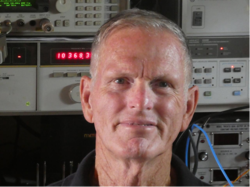
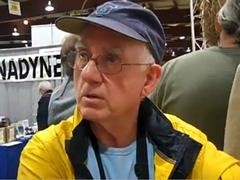
.jpg)
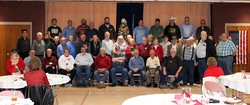
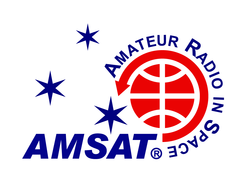 Central to the development of the 3U spaceframe, AMSAT will build three flight-ready spaceframes for an upcoming series of satellites with potentially enhanced flight control, payload, and communication capabilities.
Central to the development of the 3U spaceframe, AMSAT will build three flight-ready spaceframes for an upcoming series of satellites with potentially enhanced flight control, payload, and communication capabilities.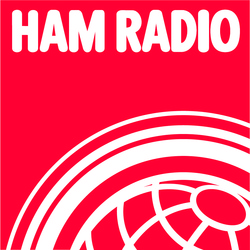 Appropriate hygienic and distancing measures will be in place for the safety of all visitors. These will have implications on the design of the stands, the opening ceremony, the presentation rooms, and the flea market area.
Appropriate hygienic and distancing measures will be in place for the safety of all visitors. These will have implications on the design of the stands, the opening ceremony, the presentation rooms, and the flea market area.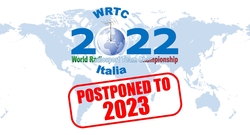 World Radiosport Team Championship 2022 (
World Radiosport Team Championship 2022 (.jpg)
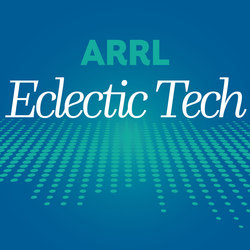 The latest edition (Episode 55) of the Eclectic Tech podcast features a conversation with Dave Slotter, W3DJS, about HamPi -- a free suite of amateur radio software for the Raspberry Pi microcomputer.
The latest edition (Episode 55) of the Eclectic Tech podcast features a conversation with Dave Slotter, W3DJS, about HamPi -- a free suite of amateur radio software for the Raspberry Pi microcomputer.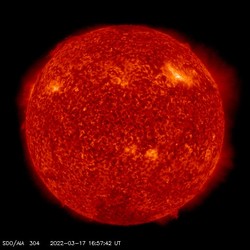
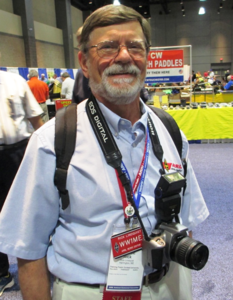 Rick Lindquist, WW1ME, has retired as ARRL News Editor. The position includes responsibilities like producing news content for the ARRL website, the weekly ARRL Letter, and the "Happenings" column in QST, as well as voicing the weekly ARRL Audio News.
Rick Lindquist, WW1ME, has retired as ARRL News Editor. The position includes responsibilities like producing news content for the ARRL website, the weekly ARRL Letter, and the "Happenings" column in QST, as well as voicing the weekly ARRL Audio News.-Blue.jpg) ARRL -- Your One-Stop Resource for
ARRL -- Your One-Stop Resource for







